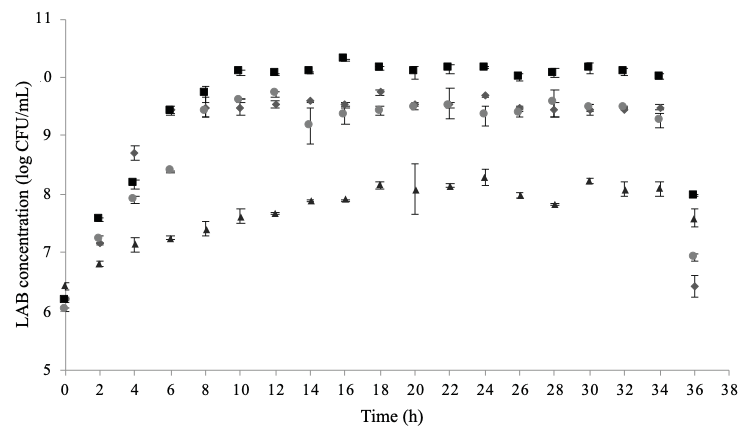 |
|
Selenium is essential for human health; however, recommended daily intake is not always met. Thus, studies have been carried out on the biogenic production of more bioavailable selenium. It has been demonstrated that certain lactobacilli can metabolize inorganic selenium to transform it into selenoamino acids. This study aimed to add selenium on Lactobacillus casei Shirota and Lactobacillus johnsonii La1, isolated from commercial dairy products through an MRS media fermentation enriched with Na$_2$SeO$_3$ to determine the minimum inhibitory concentration, the changes in the kinetics growth, and the selenium bioaccumulation. The minimum inhibitory concentration (MIC) was determined using the Talmadge and Fitch method. Kinetic changes were calculated by modeling the growth curve, and an inductively coupled plasma (ICP) assay was used to determine selenium accumulation by the cell. The MIC of Na$_2$SeO$_3$ was higher than 190 mg/L in both bacteria, and kinetic changes showed faster growth when media was not enriched. Selenium absorption of 64.50 % was found for Lb. casei Shirota and 75.78 % for Lb. johnsonii La1. Obtained results demonstrated that these lactic acid bacteria bacteria are a potential ingredient in functional food processing to their ability to accumulate selenium.
Keywords: Selenium, lactic acid bacteria, Lactobacillus, selenoamino acid, selenocysteine.
|
|
 |

